The instruction was simple. Rate all the grounds in the SPFL, they told me. The execution was slightly more difficult.
There is an easy way to rate grounds — just use the UEFA grade and the SFA licence bands. Simples.
But I believe grounds are more than just certificates or box-ticking exercises. They live and breathe. We form bonds with them. We go there as kids and, with the grace of God, stay there until we are pensioners.
They are wayposts in our lives as football supporters. Each ground will have a particular memory for each supporter. It is why rating the grounds will create arguments.
I welcome this. What is football without a rammy?

The matchday experience in Scottish football is often intoxicating and very rarely warm
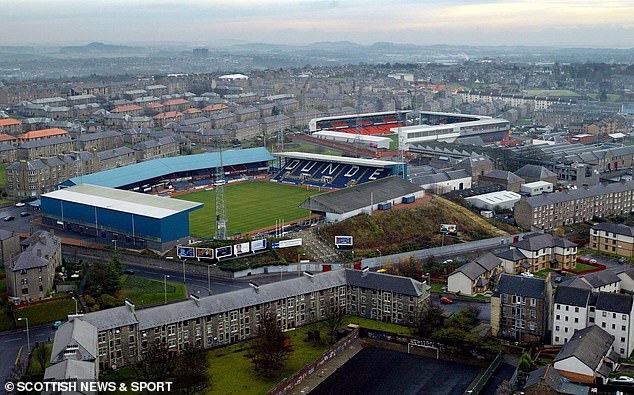
The Dundee clubs’ grounds are side by side on the same street… but who comes out on top?
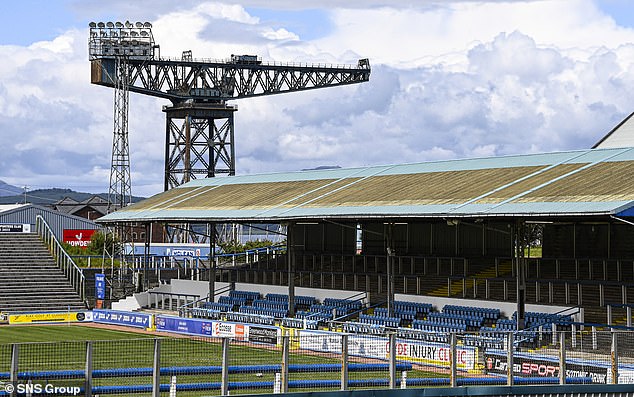
Morton’s Cappielow stadium has an iconic backdrop, but how high up the list does it rank?
My method, if it deserves such a grand term, is to rate my favourites and tell you why.
I have listed heavily towards old-style stadiums. They are slowly being sold for housing and supermarkets. At least one should be kept. It would be visited by football tourists in 100 years. The guide would simply say: ‘This is the land where football was invented. This is where they came to watch it — coo shed, railway sleepers and all.’
41. Meadowbank, Edinburgh City
Division: League Two. Opened: 1970. Capacity: 1,320
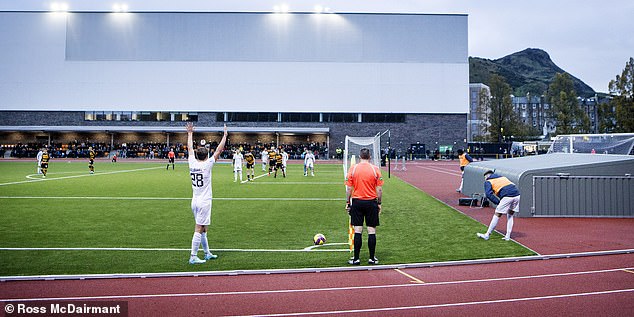
Binoculars are required to get a decent view of the action at the multi-purpose Meadowbank
Meadowbank has seen much. Football fans at the stadium cannot say the same.
This is a rebuilt stadium that resounds to the past glories of Lachie Stewart and Liz McColgan. But it is not suitable for watching a football match. The distance from the rudimentary stand to the pitch is substantial. One is tempted to pack a telescope into the laptop bag before venturing to report on a match.
This is frustrating for several reasons. First, one could not hope for a better welcome from volunteers. Second, Michael McIndoe’s side is playing excellent, attractive football. But from seats basically at ground level one is left with no perspective. The default position of a journalist, some might say.
It is also the type of ground where people from the adjoining offices come down to tell the young ultras off for banging their drum too loudly. True.
40. New Douglas Park, Hamilton Academical/Clyde
Division: Championship/League Two. Opened: 2001. Capacity: 6,018

New Douglas Park’s plastic pitch has had its fair share of critics in recent season
This is how football in Scotland can now be. New Douglas Park is a pale imitation of the old warrior. There is a stand that faces out onto sides of a gentle disorganisation, including a blank wall that receives its share of errant kicks.
In the cruellest twist of fate, Clyde seemed fated never to escape. They were the lodgers who came to dinner and stayed forever. This situation is now in the balance, of course. The sale of the stadium is still mired in negotiations.
The atmosphere inside the ground can be poisonous. There is a theory that CIA agents are alerted when Accies are one down and capture the bile to use in secret assassination ops. It could be true.
The Clyde support are more restrained. There is a sadness in this. They seem to have accepted they will never go home, wherever home might be. The sit in the splendid fan lounge and sip their pints, wondering where their next refuge might be.
Shawfield has gone. And not to the dogs. New Douglas Park remains.
39. Ainslie Park, The Spartans
Division: League Two. Opened: 2008. Capacity: 3,612
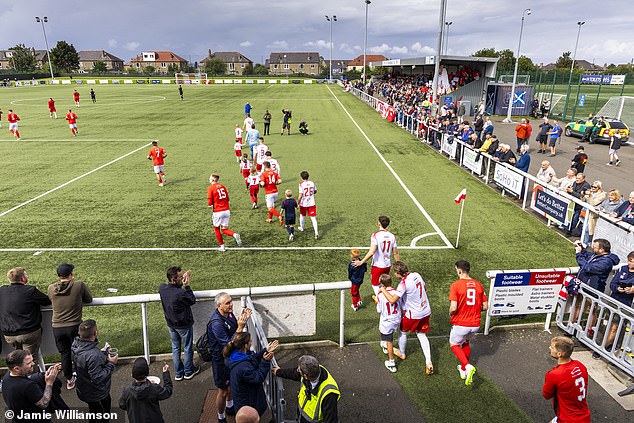
Ainslie Park has that most useful amenity of a bus stop stationed just outside the ground
Ainslie Park has that look of being knocked together by your uncle who claims he is a builder by trade and has used materials found in his extensive hut and in the skip from that couple who are refurbishing No 29.
Its primary feature is the balcony that sits outside the hospitality area. From there, on a clear day (and remember, it is Edinburgh) one can gaze across to a basic grandstand and then up to a wee area of terracing where local coaches like to gather, possibly to discuss why playing out from the back is excellent even when it regularly invites the opposition to score.
It is a smashing place to visit. It has the essential of a bus stop outside the ground, meaning one does not have to drive in Edinburgh. The city has the same attitude to cars as jackals have to wounded prey.
The celebrated balcony leads one into a civilised bar where hospitality is dispensed liberally and that leads towards a series of rooms where Spartans recent past is celebrated. In one corner, there is a shrine to Gordon Strachan, a son of the parish. He has donated medals, shirts and other mementoes.
The place resounds with enthusiastic noise from the lads and lasses of the club’s various under-age sides. There can occasionally be a sighting of Donald Park, former footballer, present coach and eternal legend. Always a good Saturday out.
38. Recreation Park, Alloa Athletic
Division: League One. Opened: 1895. Capacity: 3,100
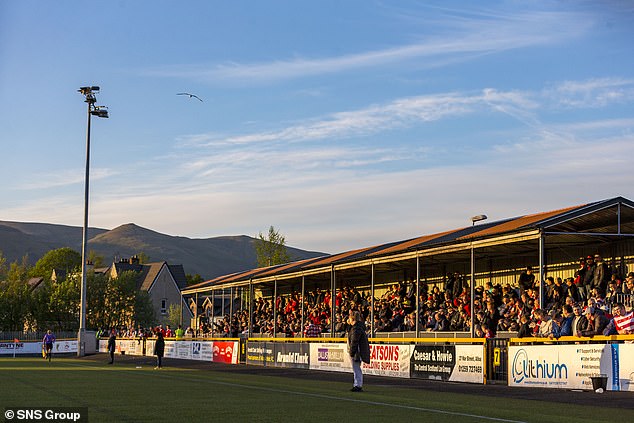
The Ochil Hills make for a stunning backdrop as evening sets in at Recreation Park
There is the theory that the Second World War turned on events in the shadow of the Ochils when the German army, besieging the home of the Wasps, was turned on its heels by the icy tracer bullets of whipping rain that swept down from the hills. Others claim it was Stalingrad, which may be as cold as Alloa but is surely more welcoming on a bleak Saturday.
In truth, all the faults of Recreation Park are in the infrastructure. The people are smashing. If one survives staring at a plastic pitch while Mother Nature unleashes a bombardment of rain, hail and even snow — and this is pre-season — then one can natter to the veterans who look into the distance and tell of heroes such as John White and Tommy Hutchison.
There is also a wee museum to the club in an industrial estate in the town. It is well worth a visit. And it is warm.
37. New Dundas Park, Bonnyrigg Rose
Division: League Two. Opened: 1953. Capacity: 2,640

Sean Connery turned out for Bonnyrigg in his youth before going on to movie stardom
The Rosey Posey inhabit a wee wonderland in New Dundas Park. One enters off a busy street into a lane that runs towards the ground. There are more volunteers than one can shake a bib at. This is a community club and the community winds its way towards it.
Most famously, it has a pitch that tilts in the manner of a drunk man carrying a 14-stone fish supper. This has drawn the ire of the authorities who have docked points and said that the pitch must be levelled up. A bit.
This, of course, is heresy. This is holy ground. Pat Stanton once walked on this grass. As did James Bond, though he was known as Connery from Fountainbridge at that time.
The best feature of the ground is the covered terracing. It is normally packed and generates the kind of atmosphere that is peculiarly Scottish: a series of guttural roars, the odd, witty barb, and the kind of laughter that is by turns scornful and resigned.
It is the sort of ground where two old men come in to take their seats and are immediately questioned on the state of their health, their immediate dietary requirements and whether they need a lift home. Credit to the game.
36. Station Park, Forfar Athletic
Division: League Two. Opened: 1888. Capacity: 6,777
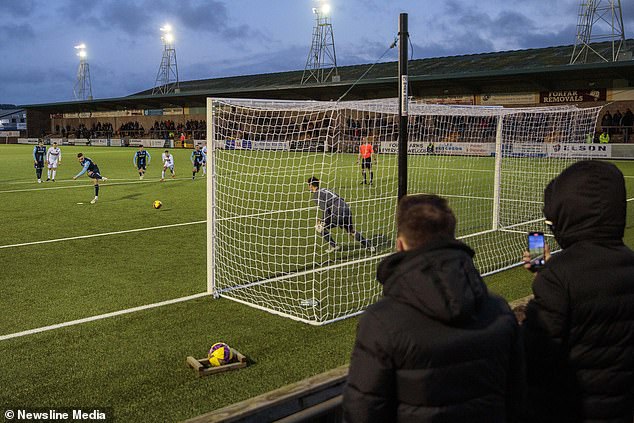
Forfar games are a favourite of football result announcers, especially those featuring East Fife
Station Park has that solid sense of history that befits a club that was formed in 1885. It holds a special appeal to those in the town but its charms have travelled.
Below the main stand is the Wall of Fame. There are Loons immortalised in name from all over the world. Barry Stevens is one of the more unusual. His primary school was in Dundee Road, Southampton. He looked at the map and saw Forfar nearby. This was in season 1974-75. He immediately supported them. ‘They won one game that season,’ he told me.
In truth, they haven’t won that many since. It doesn’t bother Barry. Over the years he has travelled up to Angus at least 100 times. He is also the club historian. He has a Forfar programme for a game against St Bernard’s in 1929. ‘I also have a Forfar Road sign hanging up in my garden,’ he said. ‘I am a lunatic as well as a Loon.’
Cries of dissent at this assertion were inaudible. Scottish fitba’, after all, makes fools of us all.
35. Borough Briggs, Elgin City
Division: League Two. Opened: 1921. Capacity: 4,520

Borough Briggs features seats from Newcastle United’s old St James’ Park ground
Borough Briggs is the most northerly ground in the elite leagues. It is difficult, however, to avoid the sentiment that you can take a team out of the Highland League but you can’t take the Highland League out of a team.
This is a compliment. It refers to the homely atmosphere of the ground and its link to the local populace. Groundhoppers usually reserve it for last in the list and their journey is rewarded by the welcoming presence of a supporters’ club, blessedly licensed.
The ground is an exemplar of ‘old school’ with a solid main stand — with seats sourced from Newcastle when St James’ Park went the way of the dodo — and terraces behind the goal. The club have been at Borough Briggs for more than a century. Locals say the record attendance was 12,000 against Arbroath in 1968.
It was considerably less populated when I visited some years ago. I was in Elgin and at a loose end (when a man is tired of Elgin he is tired of life) but my spirits were revived by the fitba’. Now is a good time to go. The team is playing well.
34. Balmoor Stadium, Peterhead
Division: League Two. Opened: 1997. Capacity: 4,855
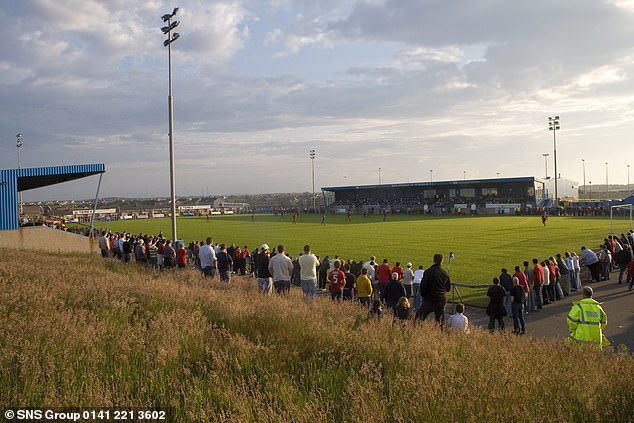
The cold North Sea wind can make for a challenging spectator experience at Balmoor
There are those who say that Peterhead is at the end of the world. They are wrong, but it’s in the same postcode. The weary hacks who made their way to the frozen north could be consoled, though, by the hospitality of the club.
I recall one winter’s day in May when my arrival at Balmoor was greeted with a warming tea, a pie and, glory of glories, working WiFi. The club, too, had Jim McInally in the hotseat for 11 years. He was and is a wonderful personality. He played under Jim McLean and Brian Clough and has tales of both. He was part of the general bonhomie at the club that still prevails.
Balmoor is still very much a Highland League ground. It was opened in 1997 when the old stadium suffered the fate of many old grounds by being sold to a supermarket. Its record attendance is 4,505, achieved when playing Rangers in the Third Division in 2013.
The stand serves as a refuge. The wind that cuts across the ground could take the enamel from your teeth. If it is blowing in the right direction then it hits the back of the stand. When it is blowing in the wrong direction, then fans in the stand have to huddle together like Inuit children on a sleepover.
Balmoor is an experience. I have not only survived it, but enjoyed it.
33. Links Park, Montrose
Division: League One. Opened: 1887. Capacity: 4,936
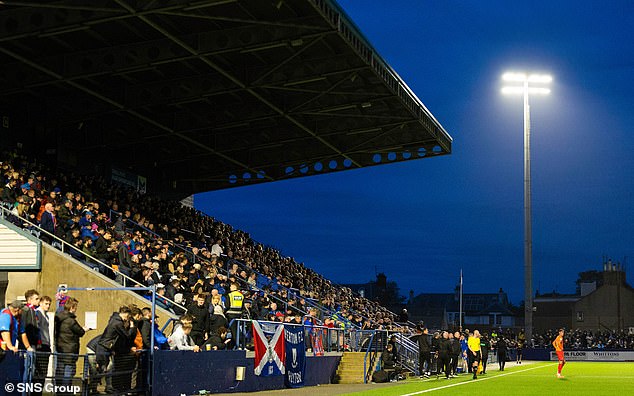
Links Park is dripping with nostalgia, as befits a ground with such a long and storied history
The Gable Endies and Links Park are part of that lexicon one learns while at one’s grandpa’s knees. Even before that time, Montrose played on the Links before moving to Links Park in 1887.
In its early days, the club rented the park out for livestock to graze and circuses to perform. Cynics observe that the club may not have moved too far from these activities. An artificial pitch, though, has deterred the livestock and the circus accusations are rebutted by Montrose’s ability to stay comfortably in the top leagues while other sides have slipped into League Two and then the abyss below whence there seems to be no return.
Links is a decent ground. There was a lot of work done in 1990s and the two stands are more than serviceable. The standing areas offer the chance to have a wee roam, an invitation rarely declined by the groundhopper.
The club also has a fine charitable trust. I once attended a kids’ match not far from Links Park in the car park of the local fire station. Montrose? My kinda town.
32. New Central Park, Kelty Hearts
Division: League One. Opened: 2016. Capacity: 2,181
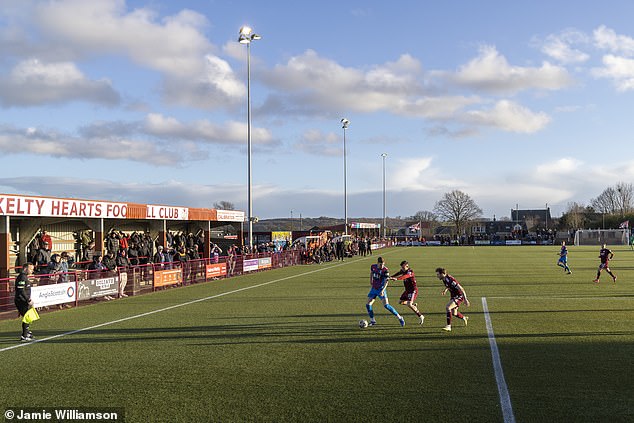
Kelty’s home ground won’t win any awards but it will serve up an afternoon to remember
New Central Park remains one of my favourite destinations. It has the aspect of being designed by an architect after he has ingested mescaline from a particularly nasty cactus and then been dropped on his head. There is not one structure that resembles another.
The gentle walk up a neat path leads one through old-style turnstiles and magnificent chaos presents itself. There are the dressing-rooms and then pie huts, committee rooms, hospitality facilities and what appears to be a mini fitba’ pitch. This is all behind a wee covered standing terrace that sits opposite the main stand.
There is a decent standing area behind both goals with a wee entrance hiding in the corner. It’s bonkers but brilliant and it talks to the rise of Kelty. This was once an amateur team. It is now in the third tier of senior football.
Improvisation seems to have been the watchword as the club has grown. One sees familiar faces on every return visit. You are not invited into hospitality but press-ganged into it. There sit the chosen many. They consume soup, stovies and pies as drinks tokens are dispensed.
This can all be accessed for the sort of price that should shame clubs further up the leagues. But won’t. Park at the school up the road and wander down. You won’t be disappointed.
31. Balmoral Stadium, Cove Rangers
Division: League One. Opened: 2018. Capacity: 2,602

Cove’s stadium is the most recently built in Scotland’s senior set-up, opening seven years ago
The Balmoral Stadium speaks to both the ambitions of Cove and of the demands of the pyramid. The club had to move from its old ground, Allan Park, in 2015 as it was the centre of a bid to build housing. The club played at Inverurie Locos until the newly-built Balmoral was ready.
In 2018, Cove moved into the new digs and very nice they are. Balmoral is neat, tidy and with excellent hospitality. It has been a decent host for Cove, who started off as an amateur club in 1923. They reached the second tier of Scottish football in 2022-23 but lost a tightly-fought relegation battle.
One of the traits of Cove is their ability to attract scorers. Rory McAllister, the celebrated plumber, blasted in 24 goals in 60 games before moving on. Mitch Megginson has scored more than 200 goals for the club since he joined in 2016 though, typically, he didn’t test the goalie when I trekked north.
I did, however, have a nice wee lunch in the perjink stand. Balmoral is built for a purpose and has fulfilled it. A capacity of 2,600 meets all needs and the stadium is easily accessible and comfortable. This may seem like damning with faint praise but that is the way new stadiums are going.
30. New Bayview, East Fife
Division: League Two. Opened: 1998. Capacity: 1,980
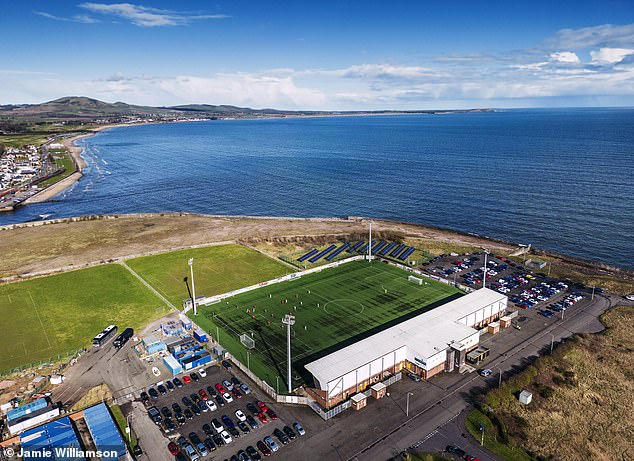
Catch New Bayview on the right day and the views, and experience, will take your breath away
New Bayview carries that awful monicker ‘purpose built’ but it has its considerable consolations. On a clear day — and these can occur annually — one can peer over the wall opposite the main stand and take in the splendour of Lundin Links or douce Largo.
There is a more than decent bar in the stadium but the East Dock Bar provides an excellent watering hole pre-match. There is also the chance then to be a Fife Flaneur, taking in the sights and sounds of downtown Methil before pitching up at the stadium.
Old Bayview is no more but there are remnants, most notably in sound. The team runs out to the tune of Telstar, the 1963 hit by The Tornados. No one knows why this tradition started. Everyone knows it will not end.
If one fancies a visit to New Bayview — and I would not dissuade the intrepid traveller — one might do so soon. Dick Campbell is the manager and his touchline performances owe something to Laurence Olivier in their incontinent drama and to Robert De Niro in their conspicuous menace.
29. Forthbank Stadium, Stirling Albion
Division: League Two. Opened: 1993. Capacity: 3,808
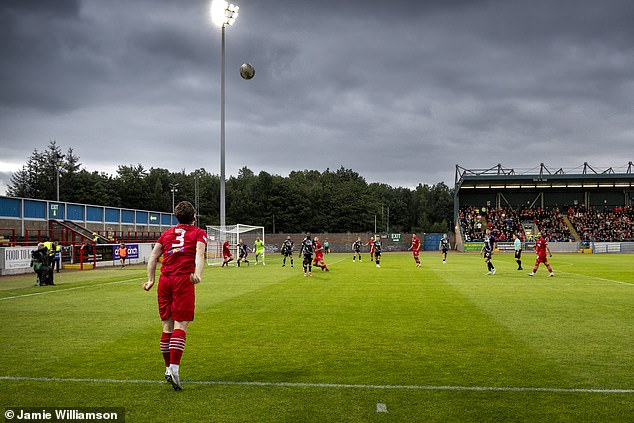
Forthbank is neat and tidy but lacks the abundant character of its predecessor, Annfield
My views on Forthbank are slightly soured by the past. I was once a season ticket holder at Albion’s previous ground, Annfield, with my two children. They are still receiving counselling for this aberration some 30 years on but I found it all congenial.
Annfield had the vast terraces where one could wander from group of pals to group of pals without trouble. They hadn’t invented stewards in those days. There was also a chap who played guitar high in the terraces. His favourite was Rave on, Stirling Albion in homage to Buddy Holly. In tribute to one of the players of that time, he had penned the elegiac and haunting Robert Reilly’s Disco Pants are the Best.
The chat with pals and the singing had the beneficial effect of distracting fans from what was happening on the plastic carpet below us. There was no such escape at Forthbank. One had to sit in one’s designated bucket seat. The only diversion from events on the park was to gaze at the Ochils. They did not seem to change much over the years.
I still occasionally go to watch Albion. The two stands are very habitable. But it’s not Annfield.
28. Almondvale, Livingston
Division: Championship. Opened: 1995. Capacity: 9,713
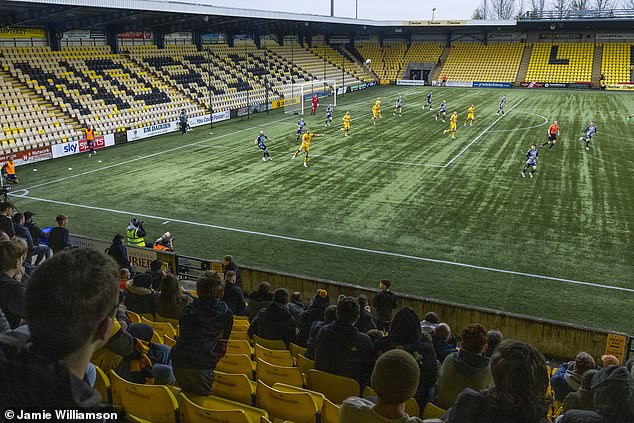
Almondvale was comically nicknamed the ‘Spaghettihad’ when sponsored by Tony Macaroni
Almondvale has no romance. It is functional, perhaps soulless. Yet it has the possibility to create great excitement. When Livingston were in the top tier, visits to this bunker in West Lothian were loathed by players of Celtic and Rangers, in particular.
Their fans enjoyed it pre-match. Tickets were available and it was a day out when away days are restricted for the mass of their support.
Sentiments could change after kick-off. Livingston would set about the big teams with a spite that suggested some heinous insult had been directed towards the club. Players, ball and sometimes refs bounced off the plastic surface. The match resembled a game of pass the parcel when said parcel contains a grenade with the pin pulled out. This was all jolly exciting for the assembled press and Livi supporters but the delights of Almondvale soon paled for the visitors.
Other matches at Livingston had a metaphysical purpose. I defy anyone to watch a scoreless draw between Livingston and another Championship side and not invoke the futility of life.
27. Albert Bartlett Stadium, Airdrieonians
Division: Championship. Opened: 1998. Capacity: 10,101
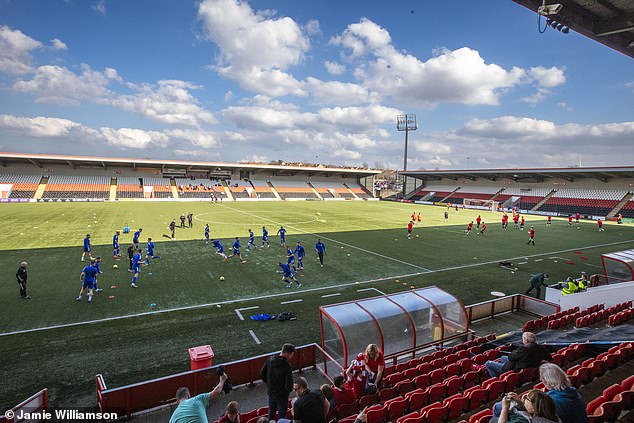
Airdrie’s stadium is built to host top-flight football. The trouble is it has never had the chance
The Albert Bartlett stadium has had more names than an international conman. It replaced the wonderful Broomfield, which has gone to the great supermarket in the sky or, more precisely, the great supermarket in the centre of Airdrie.
Albert’s biggest problem is that he is too big. They say there are at least 10,000 seats in the stadium. About a tenth are used regularly.
But some traditions remain. The Airdrie support vents a spleen with all the gusto of a malignant surgeon on crack cocaine. Once I was hit by a can of McEwan’s Export at Broomfield. I was playing in a schoolboys’ match.
This incident was recalled a couple of seasons ago when I saw Kenny Miller, then manager of Livingston, emerge from his dugout to remonstrate with the ref. The small boy sitting in the row in front of me — who had the angelic visage of a St Paul’s choirboy — roared immediately: “Sit doon ya badly b******”. His father gave him an approving nod.
The ground may be sparsely populated but its rage quotient is wonderfully high.
26. Ochilview, Stenhousemuir
Division: League One. Opened: 1890. Capacity: 3,746
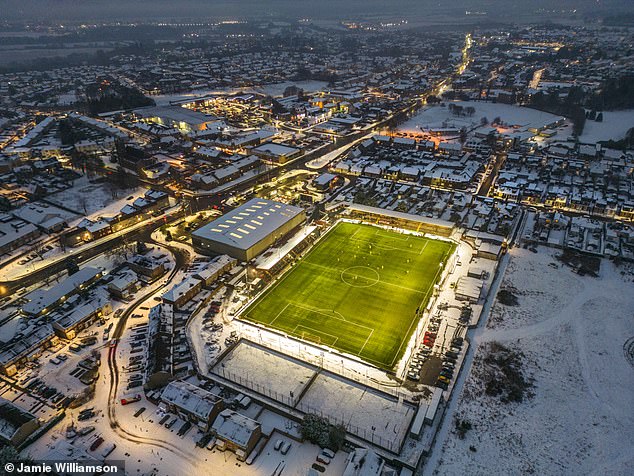
Ochilview is a long-standing favourite of global groundhoppers… particularly from Norway
Ochilview has pleasant oddities. No sooner has one stumbled over the front door than a wee bar presents itself. It would be rude to avoid it.
It also once had the only chairman of a Scottish football club to invade Iraq. Probably. Ian McMenemy was that soldier, lance corporal, to be precise, in the Territorial Amy.
It also has the Norwegian stand, sponsored by supporters from that country. They noted that Stenhouse was akin to their word for a stone house and that was enough for an initial trip, subsequent sponsorship and a lasting relationship.
Said stand is approached down a wee street that leads off the main thoroughfare. Ochilview thus seems to have been carefully placed amid houses and industrial units. This means that players sometimes have to leave their plush bus and walk the final yards to the ground. This offers ample opportunity for fans to comment in the manner of Simon Cowell apprising a one-armed juggler.
The stand is capacious and one can look left to observe the away support that initially seems discombobulated by the surroundings.
One warning: when I last visited the youngsters had a drum and were making more noise than the attacking side in Zulu.
25. Galabank, Annan Athletic
Division: League One. Opened: 1953. Capacity: 2,504
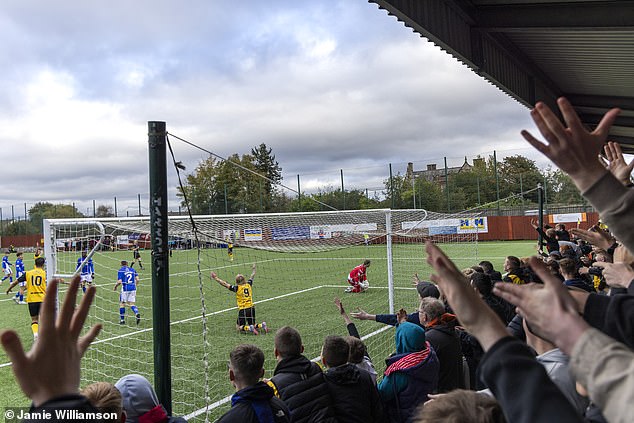
Travelling supporters be warned: pyrotechnics are not particularly welcome at Galabank
Galabank sits just off a main road. Its entry system seems based on Alcatraz, though obviously more stringent. The clang of gates and turnstiles opens up onto an area behind a covered terrace where volunteers voice a warm welcome and raffle tickets are sold.
There is a fine lounge and hospitality area that leads off into the ground itself. There are two choices for the spectator. Stand in the covered or uncovered area or sit in the stand. The covered standing area is the choice of the more vocal fan. The sitting area has the considerable benefit of being within earshot of an excellent commentary team. It also has a good view of the pitch.
Galabank is a relatively new venue as Annan only moved there in 1953. It has a distinct family feel. Volunteers are father and son, mother and daughter. The home fans all seem to know each other. The atmosphere is thus restrained outside the covered standing area.
The football is taken seriously, but not too seriously. Modern football culture is not embraced. There were sniffs around me when a visiting support unleashed some pyro. They owed more to disapproval than to any effects from the resultant smoke.
24. Victoria Park, Ross County
Division: Premiership. Opened: 1929. Capacity: 6,541
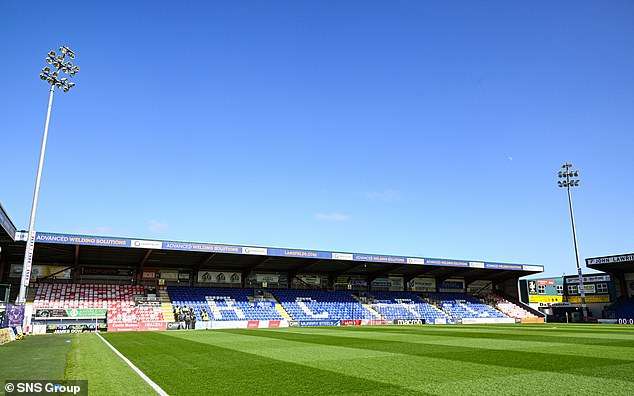
Ross County’s home ground has become a fixture in the top flight despite some recent scares
Victoria Park in Dingwall sits quietly as the unprepossessing neighbour in the big leagues. Ross County can be knocked down. But they come back. They are small but punch above their weight.
The ground holds just more than 6,000 but this is more than enough to accommodate supporters on most match days. The population of Dingwall is just more than 5,000. This may be the only ground that can hold all the inhabitants of the town or city it sits in. Discuss.
The ground is simply set up. Four all-seated stands enclose a tight pitch. This enhances the atmosphere, even when the ground is less than full. There is a loyal support complemented by a board, led by Roy MacGregor, that is generous with financial backing.
The ambience is one of quiet satisfaction, occasionally erupting into jubilation when relegation is avoided, promotion from the Championship is achieved or, gloriously, a league cup is won (2016).
Victoria Park is not a standout stadium. But it does reflect something of the club: humble but more than fit for purpose.
23. Stair Park, Stranraer
Division: League Two. Opened: 1907. Capacity: 4,178
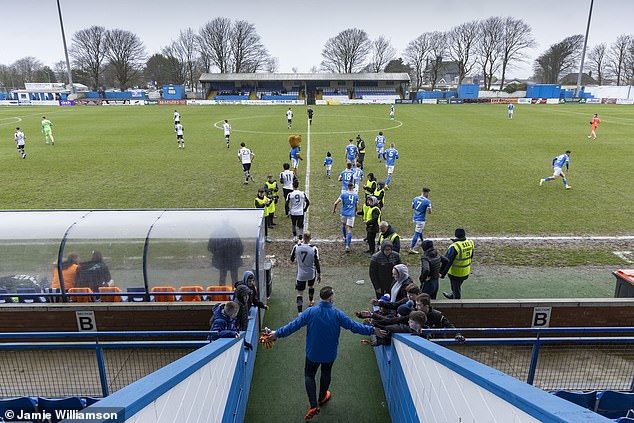
There’s a historic – some would say prehistoric – feel about a trip to Stranraer’s Stair Park
Stair Park has a Coo Shed. This accommodates spectators. It also has a pitch that sometimes seems to have hosted a stampede by coos. Both make it one of the emblematic Scottish stadiums.
Modern times have not been good to Stranraer. The fees they once attracted for youngsters have disappeared. There is now a mass of clubs in the Central Belt — above and below them in the pyramid — that can offer better terms to players. But the stadium still stands. And Stranraer are still in the SPFL.
The main stand has an aristocratic background. It is placed in the ground bequeathed to the town by the Earl of Stair. The park thus sits in a bucolic space that has a public park with shrubs, flowers and a bandstand.
The fitba’ stand is relatively modern, built in the 1990s, and offers a terrific view of proceedings. Increasingly, it has become a favoured destination for groundhoppers.
It is another of those clubs maintained largely by volunteers and there is a genuine warmth in their approach. There is a feeling, though, that Stair Park is hanging on to its status as an SPFL ground. The imperatives of modern football may banish it to the Lowland League. This would be a loss for it is a gentle reminder of times past.
22. Caledonian Stadium, Inverness Caledonian Thistle
Division: League One. Opened: 1996. Capacity: 7,512
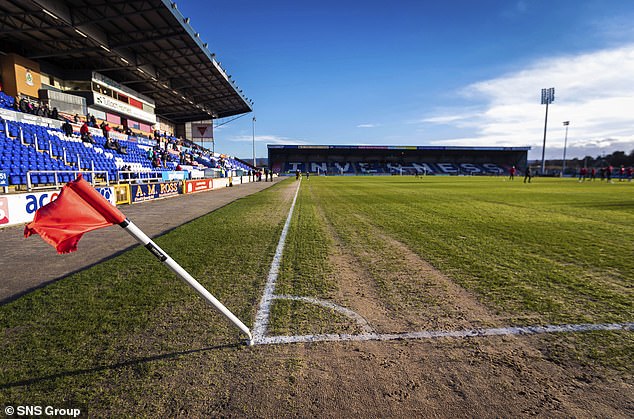
Scotland’s fairytale football club, Inverness Caledonian Thistle are enduring troubled times
The most pressing inquiry about Caledonian Stadium of late is whether football would still be played in it. The shambolic finances of the club threatened its very existence. Fortunately, Inverness has supporters in Alan Savage, businessman, and Charlie Christie, club legend. The efforts of both may have saved the club.
The stadium itself is worth a visit. Built with the help of Highland Council, it looks on to the Moray Firth and sits in the shadow of the Kessock Bridge. The support — until the scale of financial fecklessness was revealed — is generally forgiving. They have been rewarded by a Scottish Cup triumph and a Scottish Cup final in recent years though league form has gone the way of the Dow Jones post-tariff.
The ground has a record capacity of 7,753 set in 2008 in a match against Rangers. That will not be equalled any time soon. However, the Caledonian Stadium is a good facility. It has the potential to be a resource for the club if exploited properly. But at the moment it seems just too big, This, though, is the least of the club’s problems.
21. Firhill, Partick Thistle
Division: Championship. Opened: 1909. Capacity: 10,101
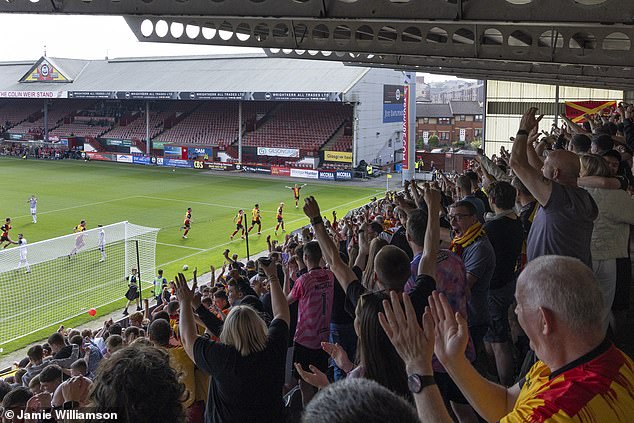
Firhill is an iconic venue but suffers somewhat from the club’s failure to build the missing stand
Firhill would be much higher in the list of favourites but for one glaring fault. It has a space where there should be a stand. If you look right from the main stand, there is a silent bank devoid of spectators.
This has been the subject of much controversy over the years. There have been tales of deals not done, houses not built and work not completed. Whatever the truth, the blank spot remains. It sits as a silent rebuke to any notions of powerful atmosphere. It is sorely felt by this observer.
My siblings and I went to games with my Uncle Davie (he was Glasgow uncle in that he had no links to the family at all other than those forged in drink). These were magnificent occasions as he had all the restraint of a sailor on leave in Hong King after three months at sea.
We sometimes sat in the stand but on other occasions stood in that space now deprived of humans. Whatever our arrangements, we consumed handfuls of pies and industrial amounts of Bovril before repairing to the town and watching The Robe, Cool Hand Luke or whatever Carry On film had just been released.
That space at Firhill now stands as an insult to my past. So there.
20. Falkirk Stadium, Falkirk
Division: Championship. Opened: 2004. Capacity: 7,937
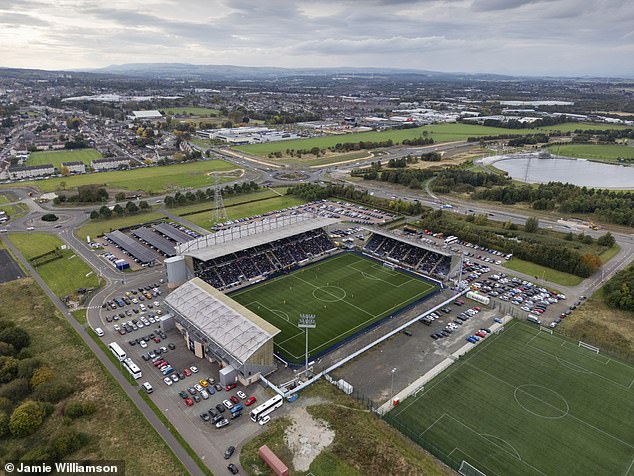
Another ground which feels three-quarter’s finished, Falkirk is set for the top flight once more
And that brings us to Falkirk Stadium. It has much to commend it. It has been filling nicely too of late. But there are only three stands. One looks out across the pitch and there is… nothing.
The rest is more than fit for purpose. There is a decent bar behind one of the goals where supporters gather for a pint. The Saudi Arabian flag regularly flies from one of its windows. It is there at the behest of the Jeddah Falkirk Supporters’ Club. One of the Bairns fans works in Saudi and when he can’t make a game the flag is his representative. This is mildly eccentric but not as outre as not having a stand. It is a matter the club wants to address in the future.
However, there may be more pressing matters at the ground. There is relentless pressure to replace the artificial surface as a requirement for Premiership participation. This is estimated to cost more than £1million. This will occupy the minds of the board.
The fans, meanwhile, regularly ensure a sell-out at the stadium as League One Invincibles surely become Championship champions.
19. McDiarmid Park, St Johnstone
Division: Premiership. Opened: 1989. Capacity: 10,696

A trip to St Johnstone’s home ground is often a colourful experience in more ways than one
McDiarmid Park is a strange one. It is an exemplar of its time.
Opened in 1989, it was built on land donated by Bruce McDiarmid, farmer, and came as a result of Muirton being razed for a supermarket. So far, so cliched.
But it has an odd history. Rugby internationals have been played here and so have Challenge Cup finals. It has decent parking and road links. There is a bus that drops one off at the park. This is the preferred mode of transport for some of Simo Valakari’s players. It also has a homely feel with regular attenders meeting in the bars and outside the stadium.
But there is a but. It is too big for the potential support. The official capacity is 10,696. This can never be approached even with giving three stands to Celtic and Rangers supporters on their visits.
The most recent attendance for the Celtic fixture was 8,795. This supports the new owner’s decision to give Celtic more room. It also points to the limits in terms of numbers in the home support.
It may be condemned to be an echoing husk, particularly if the Saints drop a division. This is a pity for those of us who admire the Saints and have enduring memories of Muirton and Henry Hall.
18. Stark’s Park, Raith Rovers
Division: Championship. Opened: 1891. Capacity: 8,867

Famed stadium architect Archibald Leitch’s pawprints are all over Raith’s historic main stand
This is a traditional ground but one has trouble keeping up with the developments. The most newsworthy of late was the withdrawal of sponsorship and support by Val McDermid, the crime writer, whose father, Jim, discovered Jim Baxter. This followed the decision to sign David Goodwillie, who had been ruled to be a rapist in a civil court case.
New owners have also implemented changes to the infrastructure and there is a drive at Stark’s Park to bring it towards modern times. However, it retains the oddities that make some Scottish stadiums a joy to visit.
The wee walk up the hill to the ground brings into view a venerable edifice. The main stand (the work of Archibald Leitch, the famous football architect) is wonderful and within reach of special steak pies.
If one ventures into the dressing-rooms and offices below stairs, the work of John McGlynn, then manager of Raith, can be fully appreciated. Not only is he a talented coach, as his work at Falkirk attests, he also fitted the showers in the refurbished dressing rooms. He is a plumber as well as a tactical wizard.
17. Rugby Park, Kilmarnock
Division: Premiership. Opened: 1899. Capacity: 15,003

Rugby Park has been redeveloped over the years but rarely reaches anything close to capacity
That wonderful chronicler of stadiums, Simon Inglis, states Rugby Park was the first football ground that Archibald Leitch worked on. This was in 1899, 34 years after Leitch was born in Glasgow. His work was made famous by leading clubs in England but his contribution to grounds in Scotland, particularly at Aberdeen, Dundee, Rangers, Raith Rovers (see above) and Ayr United is significant.
However, the need to modernise grounds for safety and aesthetic reasons often extracts a price. It has been paid at Rugby Park. Once a distinctive, howling stadium, it now regularly resounds to echoes. There is a vibrant support but it is not enough to fill the four stands.
It still holds history, however. The joy of a visit is enhanced by meeting such as Ray Montgomerie, captain of the 1997 Scottish Cup-winning side. A veritable delight for this observer was to bump into the late cartoonist Malky McCormick, who would be wearing his cup final suit. This was a blue and white striped confection that had a strong resemblance to a pair of pyjamas.
16. St Mirren Park, St Mirren
Division: Premiership. Opened: 2009. Capacity: 7,937
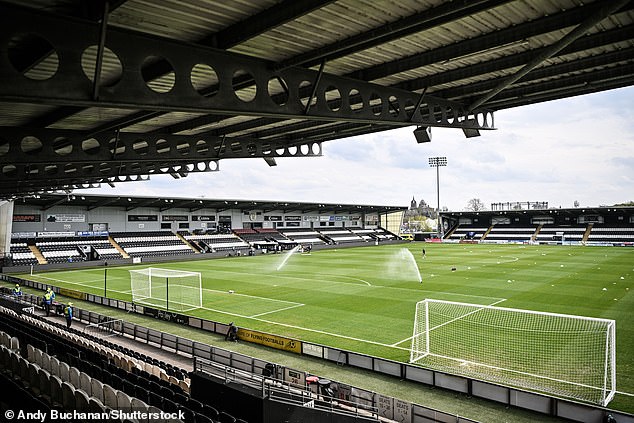
Set in an industrial estate, St Mirren’s home ground is functional but not entirely fulfilling
Love Street no more. Tesco were the buyers. It prompts one to a whimsy about great players from the past who come alive in a fitba’ Field of Dreams and find themselves in the vegetable aisle. No matter.
The St Mirren Stadium is a perfectly acceptable stadium of the four stands and bucket seat variety. It is easily accessible by car and ticks all the boxes regarding catering and club shops.
Its one distinct feature is the group of fans who populate the area near to television mics. One of the joys of watching St Mirren matches on the telly is to hear language that would embarrass the National Convention of Fishwives. The commentator is then forced to make more apologies than the announcer at Queen Street Station.
It must be said, too, that the home crowd is very capable of producing an atmosphere, though that can sometimes be wounding to those in the home dugout. This is a reminder of Love Street. When reporting games there, one always recalled the words of PG Wodehouse: ‘It is never difficult to distinguish between a Scotsman with a grievance and a ray of sunshine.’
15. Palmerston Park, Queen of the South
Division: League One. Opened: 1919. Capacity: 8,690
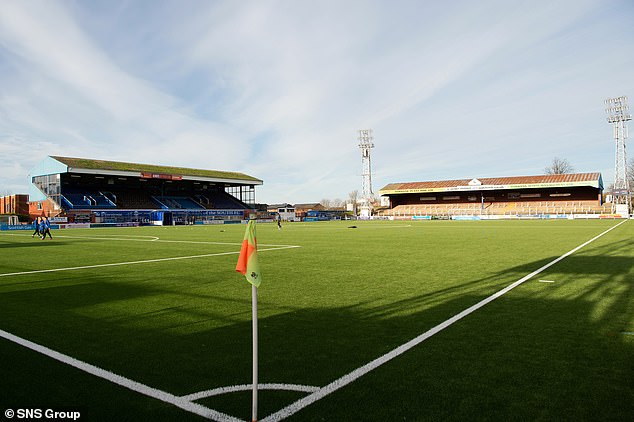
Glory days have been scarce at Palmerston Park in recent times but fond memories abide
Palmerston Park is another relic from my past. I once wrote wittering nonsense from there in the 1970s. I am humbled to say that I have continued to do so in the subsequent decades, though the venues have changed.
Palmerston is venerable. There is a claim that it has the oldest free-standing floodlights in Scottish football. Less happily, the old Coo Shed was replaced by an all-seater stand in 1995.
Indeed, the ground has largely been revamped from my days as a cub reporter. I have been back recently and I am always in awe of how it remains a gathering point for many of the town worthies. The ground, though, carries that look of being XXL when the body it covers is aged 4-6. It dwarves the support.
But its memories still stride powerfully in this napper. Many of them concern Willie Harkness, one of the more colourful characters in Scottish football, who was chairman of the Doonhamers.
Queens have become a ‘floating club’ in recent years. Their home is stable but their position in leagues is variable. They have come close to glory, though. The run to the Scottish Cup final defeat to Rangers in 2009 produced a UEFA Cup qualifying place. But Palmerston was not to host a European game. The game against Nordsjaelland was played in Airdrie because of UEFA rules on seating. And Queens went out.
14. Fir Park, Motherwell
Division: Premiership. Opened: 1895. Capacity: 13,677
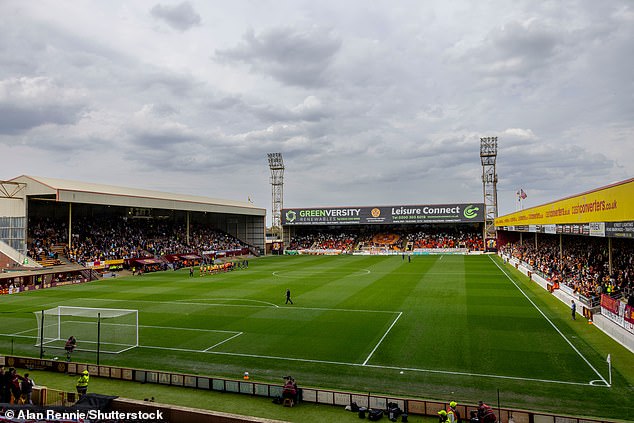
A top-flight staple, Fir Park has witnessed incredible drama and some staggering scorelines
Fir Park may seem slightly distressed or in need of the attentions of those makeover experts that fill the TV schedules. But it bristles with memories for me. It is a proper football ground. The stand creaks underfoot, the stairs and décor resemble a secondary school of the 1960s, and the ground is capable of producing a marvellous atmosphere.
I first went on November 3, 1970. I can be that precise because there is that Internet thingy. Motherwell were playing in the Texaco Cup (that internet thingy is available to you too) and had come back from the first leg at White Hart Lane trailing Tottenham Hotspur 3-1. That deficit was overcome in thrilling fashion. There were 22,450 and I was stunned to be one of them. I cannot tell you at this precise moment where my car keys are. I can describe in vivid detail the performance of winger Brian Heron. I will spare you.
The other outstanding match was on my birthday in 2010. Hibs and Motherwell conspired to give me 12 goals, neatly arranging such in a 6-6 draw. It was bonkers. Asked afterwards for his view on the match, the late great Craig Brown, then Motherwell manager, observed: ‘I coached the forwards. Archie (Knox, his assistant) coached the defenders.’
13. Dumbarton Football Stadium, Dumbarton
Division: League Two. Opened: 2000. Capacity: 2,020
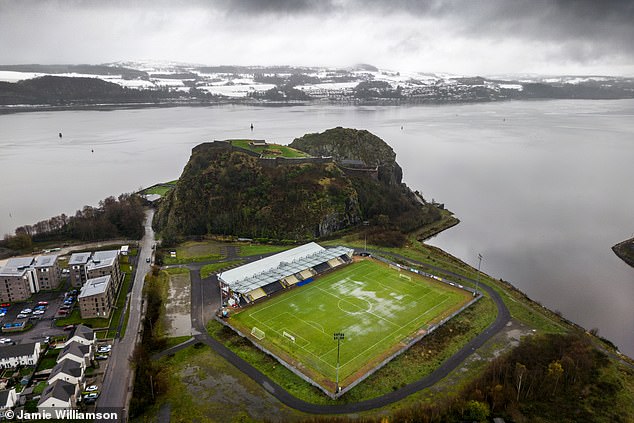
The most scenic ground in Britain? Dumbarton’s home certainly has a fair claim to that title
Dumbarton sit between a Rock and a hard place. The Marbill Coaches Stadium — the latest in a long list of monikers for the ground — is modest in terms of capacity with room for just more than 2,000 fans. But it is beautiful. The main stand sits in the lee of the Rock but it does offer a view of the spot where the River Leven joins the River Clyde.
Once, when buying a selection of tat from the German Football Museum in Dortmund, my eyes cottoned on to a calendar carrying photos of distinctive grounds. ‘That’s the Marbill Coaches Stadium,’ said my son. He didn’t. He just said: ‘That’s Dumbarton’s ground.’ He was viewing a dramatic aerial shot. And he was right.
The ground’s beauty, though, has lured those who want to build houses on the site and move the Sons to an industrial site. Legal and financial rammies have followed. The supporters fight on, through administration, points deductions and relegation. More power to their elbow. Both club and stadium must survive.
12. Dens Park, Dundee
Division: Premiership. Opened: 1899. Capacity: 11,775
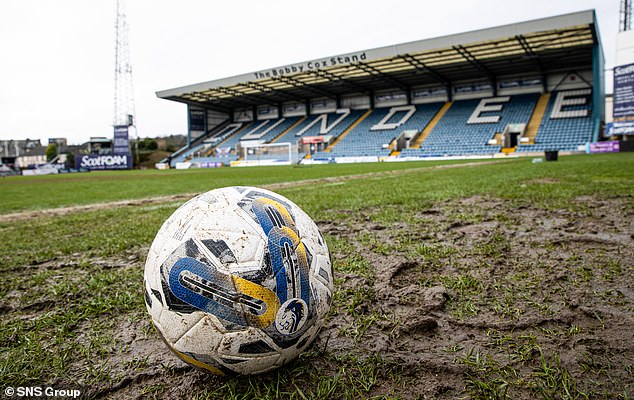
Dens Park’s surface has been notorious in recent times but the club could soon be moving on
Once at a Boxing Day match at Dens, a pyro explosion behind one of the goals rocked the primitive press box in the main stand. ‘That sounded like a bomb,’ said one startled colleague. ‘Yes, it’s caused 100 grand worth of improvements,’ replied another.
Dens has seen better days. But what days. The club has been on site since 1899 and the stand was designed by that man Leitch in 1921.
Famously, it is just a stroll from Dundee United’s ground at Tannadice. I know Inter and AC Milan share a stadium and have reached European Cup finals. But have two teams from the same street ever reached European Cup semi-finals? Discuss.
Dundee did this in 1963. United did the same in 1984. But Dens seems to be in the past. The club wants to move to a 12,500 stadium in Camperdown. It makes sense, though traffic issues are holding the project up. But there will be a tear in the eye of many a Dee when the ground is vacated. These eternal predators of supermarket or housing development are licking their lips.
11. Tannadice, Dundee United
Division: Premiership. Opened: 1882. Capacity: 14,223
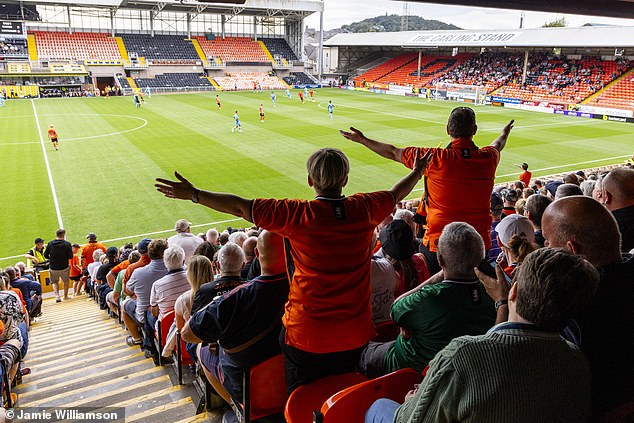
Situated within walking distance of Dens, Tannadice has seen some big scalps claimed
Tannadice was christened when Dundee Hibernian took over in 1909. It seems to some that only the name of the club has changed.
To Dundee United. This is unfair. Tannadice has been changed over the years and holds a wonderful history. Part of that is celebrated by naming stands after managers Jerry Kerr and Jim McLean, who combined to take the club to the top of European competition.
McLean was simply a genius. He delivered a league title but also allowed Tannadice to host defeats of such as Barcelona and Roma.
It was a wonderful place to visit in those days as a fan. A mate insists that the best back four in Scottish fitba history is Gough, Hegarty, Narey and Malpas. Everyone knows about the pace of Ralph Milne and the adroit skills of such as Paul Sturrock.
These stars could be watched on a terracing where the depth of the stairs seemed slightly bigger than the norm. This led to a feeling of teetering as one peered on the park. Though it may have been the result of the consumption of industrial amounts of alcohol, which was the norm in the 1970s.
Tannadice still has its peculiarities. There is a smashing window feature that allows punters to view the match from suites. There is the tunnel in the corner that allows punters to berate a manager for a decent length of time and there is the press box high in the stand that has a glass window. This adds to the glee of filing a match report on edition while fans obscure the view, giving one such abuse that even a Northern club comic would blush at their language.
10. Hampden, Queen’s Park
Division: Championship. Opened: 1903. Capacity: 51,866

The sight of Queen’s plying their trade in near-empty Hampden is a quirk of the Scottish game
Hampden divides opinion in the same way Moses parted the Red Sea. Though Hampden is damper, of course.
Now, I know Queen’s have a kiddy-on park just up the road but the national stadium is where they are suffering at the moment.
Full disclosure: I like Hampden. There will be those who say that is because I watch games from the press box. But I don’t now. I am a paying customer and subject to the whims of the fitba’ gods as to where I sit. And I enjoy it.
Part of this, of course, may be sentiment. When Hampden is finally demolished to make way for a supermarket, archaeologists will be puzzled when they find a large heel from a shoe in the deep loam under what was the covered terracing. I can pre-empt their inquiries by saying it was from my platform shoe and was detached when Joe Jordan scored the goal against Czechoslovakia in 1973 that took us to the World Cup the next year. I was thus condemned to walk home in the manner of Long John Silver deprived of his crutch.
The mass of Scottish supporters have dear memories of the place. The likelihood in the long term is these will not save the Old Lady. The Denis Law Supermarket beckons. Or the Kenny Dalglish Sheltered Housing.
9. East End Park, Dunfermline
Division: Championship. Opened: 1885. Capacity: 11,480
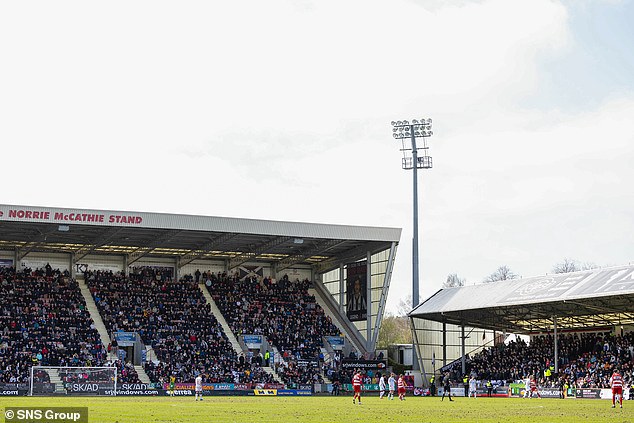
Dunfermline’s home ground would be more than welcome in any expanded Premiership
Strolling into East End Park in 2023 for a match against St Pauli, my aforementioned son nodded in approval. ‘This is some ground,’ he said. It is to Scottish football’s debit that the home of Dunfermline does not host regular fixtures in the Premiership.
Dunfermline, though, have no one to blame but themselves. And various businessmen. At one time, European competition funded upgrades to the ground. This was in the sixties. In the 1990s, it became all-seater and it is a fine ground with room for the noisy ultras.
The matchday experience in Dunfermline is excellent. In the shadow of the Abbey stands the Old Inn. It has been a pub since about the 1600s but it was where Dunfermline was founded on June 2, 1885. Fans gather here to this day.
The Legends bar in the stadium is also worth a visit. A fan once showed me a scarf that had been given to him by his dad in 1957. It was as frayed as my nerves after my annual appraisal. I asked him who he would pass it on to. No one, he replied. The scarf was to be burnt and the ashes spread on East End Park. Proper fan.
8. Easter Road, Hibernian
Division: Premiership. Opened: 1893. Capacity: 20,421

There’s no place in football like Easter Road during a rousing rendition of Sunshine on Leith
Easter Road was a popular haunt for me as a student journalist. It was all vast, steep terraces and wonderful players. The Hibs team of the early seventies was the best Scottish side I have seen that never won a championship.
The joy of the Hibees was made all the better with the proximity of the pubs and the edge that Leith carried back in the day. The stadium now is all modern and almost stereotypical. But the fans can rise above that. The renditions of Sunshine on Leith are wonderful. Not an original view, but a sincere one.
The main stand has excellent hospitality space but has one major drawback for an old hack. I had to hire a Sherpa once to access my seat high in the stand. And try getting that through expenses.
One’s effort is rewarded with an excellent view. I once spotted clearly that a Leigh Griffiths free-kick had gone over the line in the same manner that one can see the Great Wall of China from space. It was missed by the ref. The goal, not the Great Wall.
7. Pittodrie, Aberdeen
Division: Premiership. Opened: 1899. Capacity: 20,866
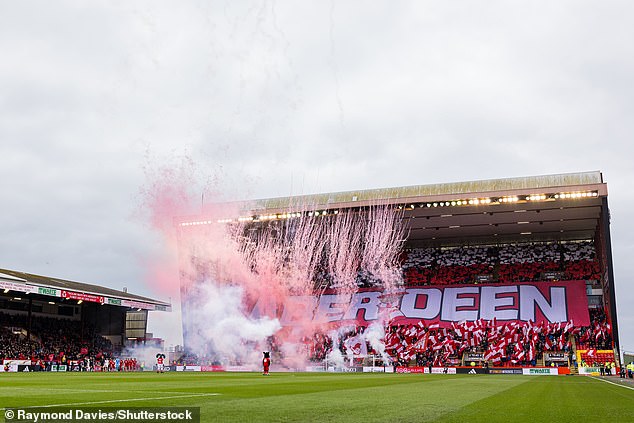
Pittodrie has an incredible atmosphere when the team is in form, which isn’t always guaranteed
Pittodrie has improved. It is still a bit ramshackle. It is still besieged by seagulls in a homage to Hitchcock’s The Birds. But the atmosphere has been lifted.
It was opened in 1899 and it shows. There have, of course, been renovations but the underlying story of late was that the Dons would move to a modern edifice. This momentum has receded but there is a feeling that Pittodrie is largely unloved.
It is, though, one of my favourite haunts. I travelled as a punter to watch Fergie’s teams and later as a journalist to witness the slow demise of a series of managers. A routine trip this season was revelatory in the matter of atmosphere. The pace was buzzing like a jar of wasps. There were roars that drowned out the rustling of sweetie papers.
Of course, all this occurred when Jimmy Thelin was the messiah. The noise may have gone down since allegations have been aired that he is merely a silly boy. But Pittodrie can roar. It does in my memory.
6. Tynecastle, Heart of Midlothian
Division: Premiership. Opened: 1886. Capacity: 19,852
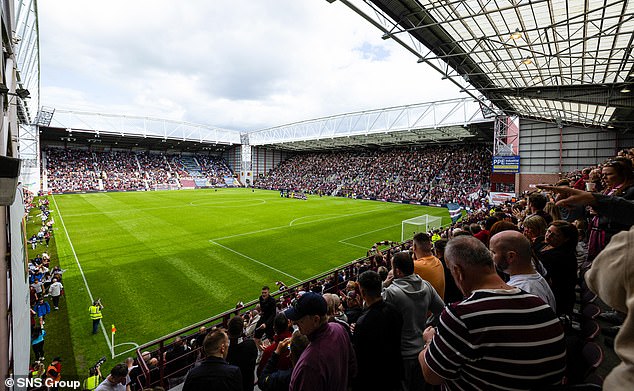
The enclosed nature of Tynecastle often makes one feel like you are actually on the park
The old Tynecastle had a row of seats at the front of the press box. The fans penned in the area in front of us all had anger management issues. It was without doubt the most sustained show of ire since Hell closed the complaints department.
Hearts fans created such an atmosphere in this tight ground that it almost made me want to live in Edinburgh. It was nasty, spiteful and immature. But there were downsides too. It could all get a bit out of hand.
The refurbishment of Tynecastle sought to retain that. It hasn’t quite worked. There is more air in Tynecastle now, more room to breathe and that diminishes the claustrophobia that invites hysteria. It is still, though, a decent stadium with good pubs nearby and within walking distance to a train station that can take one back to Glasgow.
I also frequented the old Tynecastle in my student days. Rab Prentice. Enough said.
5. Ibrox, Rangers
Division: Premiership. Opened: 1899. Capacity: 51,700
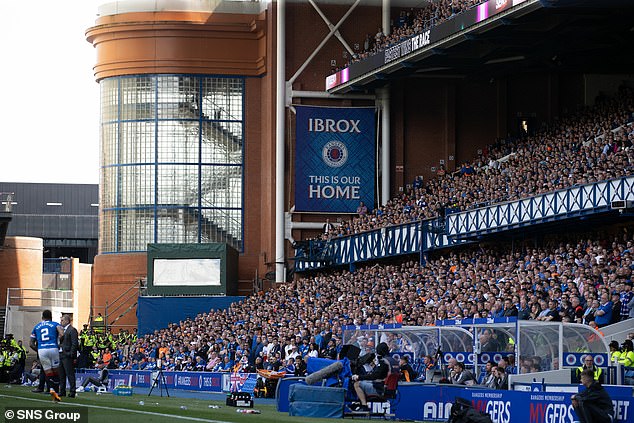
Ibrox was ahead of its time when it was redeveloped and still makes for an amazing experience
Ibrox is an impressive edifice. That imposing frontage, that Leitch stand. But it stands to me as a marker in time.
It was the first Scottish stadium I attended that had undergone a severe facelift. I went into the toilets in the early eighties and stood in awe at the facilities. A urinal. Pristine. Taps. Running water. Hot. Towels for yir mitts. I was like the Amazonian Indian who has spotted a plane for the first time.
Recent improvements to Ibrox have been more vexing for the fans in terms of timing and delays but the work in the late 20th century was bold and ambitious. It is a box-like stadium but one that is capable of generating considerable noise. Sitting in a shaking press gantry on Old Firm day in the second era of Walter Smith, I was asked by a visiting English journalist: ‘Is it always as loud as this?’
‘Wait until the teams come out, ‘I replied.
4. Celtic Park, Celtic
Division: Premiership. Opened: 1892. Capacity: 60,411

Scotland biggest ground, the addition of those ‘disco lights’ only enhanced the atmosphere
There will those who accuse me of bias in this pick. They are, of course, correct. Parkhead was the first big ground I attended. Any football fan will tell you that the first love makes it mark.
I have now watched matches at Parkhead in eight different decades. The ground has changed somewhat. The Jungle has gone. The terraces have disappeared. Yet the ground retains its reputation for atmosphere on European nights.
The much-derided disco lights have proved to add to the drama. You’ll Never Walk Alone brings back memories. The main stand needs an upgrade but the price may be too steep.
It stands for me — as a football stadium stands for everyone — as a repository of memory. The scene has changed but the ghosts still walk across the stage and my mind.
The outside of the stadium has been cleverly reconfigured. The statue of Billy McNeill opens the Celtic Way. Brother Walfrid, Jimmy Johnstone and Jock Stein stand at the front door.
It is difficult to articulate what a club stadium means to a fan. There is no need to expand. You all know what I mean.
3. Somerset Park, Ayr United
Division: Championship. Opened: 1888. Capacity: 10,185

Some travel to Ayr for the seaside. Others travel for the unrivalled experience of Somerset Park
Somerset Park was a strong contender for gold. It merely makes the podium. Why? Because the club improved the stadium. This may seem perverse but let me explain.
Somerset Park is famous for its Archibald Leitch stand that does not quite run the length of the field. One story is that the club ran out of money. There are others. No matter, it is a magnificent edifice that has a concourse (concoarse in Ayrshire?) running its length where pies, Bovril and comfort stations can be found. There are two old-style terraces behind each goal.
So far, so magic. But once there was an expanse facing the main stand. They called it a terrace but it was a rite of passage, a testimony to the toughness of the Scottish football fan. It was uncovered. There is no better example of hope over experience.
Yet people gathered there. What’s more, they stayed. One of the delights of watching a match from the main stand was to wait for the inevitable rain. The floodlights would illuminate this downpour. It was as if a platoon of machine-gunners had launched tracer bullets into that vast expanse. It was more brutal, of course. There were some who would run for cover. There were others who had umbrellas. But there were those who would not flinch. That’s fitba’.
A brilliant stand has now been built on that spot with excellent catering facilities. A standing area remains. But we will not forget those who defied the elements and then strolled to the pub.
2. Gayfield, Arbroath
Division: League One. Opened: 1880. Capacity: 6,600
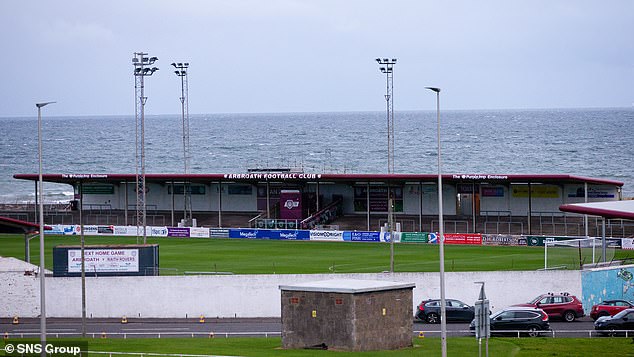
There are few colder spots than an exposed stand at Gayfield. Don’t knock it ’til you’ve tried it!
Gayfield is a wondrous spot. It sits opposite a fine supporters’ pub with excellent fare and top-class banter. The ground backs on to the water. Lots of it. It is conventionally set up, with plenty of cover. It is needed.
The best option is to sit in the main stand on a windy and cold night. There are 365 of them every year so there is plenty of choice. You can then watch the spray from the North Sea come over the opposite stand. This a scene that should be chronicled by David Attenborough.
Indeed, nature has a habit of breaking into Gayfield stories. There is the one about meeting the polar bear with his new winter coat and a balaclava who is heading to Tutties Neuk (said fan pub) because it was just too cold to watch football. There is one about the player (in Glasgow versions it is usually Danny McGrain or Willie Mathieson) who is felled by a fish propelled over the stand by inclement weather.
Both, to me, have that hint of truth. I try to go once a season. Any more and I would be spoiling myself.
1. Cappielow, Greenock Morton
Division: Championship. Opened: 1879. Capacity: 11,589
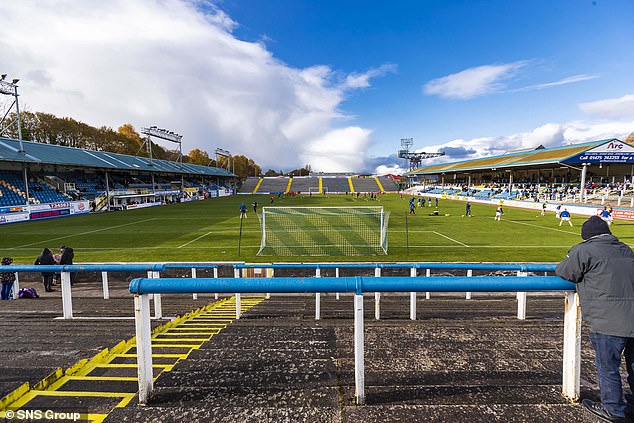
Cappielow might not be everyone’s cup of tea… but they clearly know nothing about football
Cappielow was the first ‘away’ ground I visited. Me, my brother and my auntie’s boyfriend. The trip conformed to the strict rules of the day. We were squeezed down at the front behind one of the goals. We somehow found said boyfriend at full-time and it would be a lie to say that he seemed relieved.
Then we stood outside a pub with a poke of sweeties before eventually boarding a train to Glasgow then Shettleston. The carriage reeked of alcohol. It shuddered to songs and it occasionally trembled with argument. We were, of course, seduced by the glamour.
I have since watched fitba’ on five continents with ultimate away days in Buenos Aires and Arabia. Cappielow was the starting point. I go regularly. It has hardly changed.
There was a report recently that Cappielow had suffered storm damage. I thought: “How can they tell?” As my old maw would say: “There is hardly two bits of it hinging the same way”. No, I don’t know what that means either but it suggests a pleasing lack of dull symmetry, a penchant for architectural chaos. The result is a stadium that cannot be replicated, cannot be mistaken for anything else.
Gloriously, it stands in the shadow of a crane. It is a reminder of what made Greenock and Scotland great. It is a silent reproof to those who sold an industry down the water. Cappielow, though, remains. It says: ‘Scottish fitba’ is historic. And Scottish fitba’ is resilient.’
It is also important.







